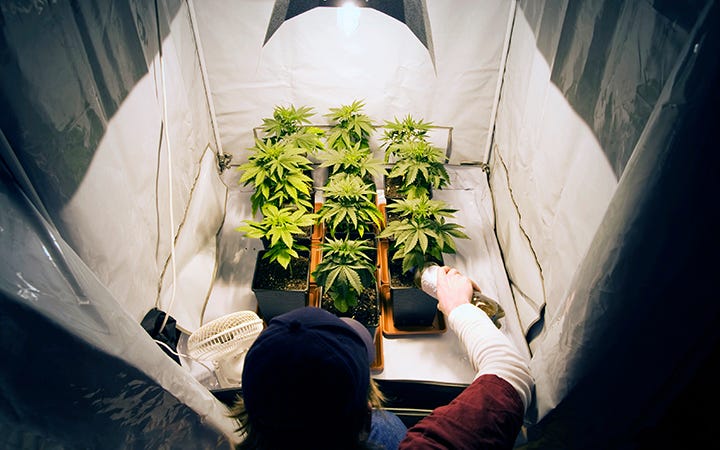
Indoor cannabis cultivation (in-door) is very popular among cannabis cultivation enthusiasts and professional cannabis growers. This allows for precise control of various environmental factors that affect the growth of cannabis plants. As a result, the yield of cannabis is of higher quality.
In this article, we will delve into the intricacies of indoor cannabis cultivation. Explore the key elements of indoor cannabis cultivation and techniques used for maximum cannabis health and productivity to be able to sell cannabis products in the wholesale cannabis business.
Environmental Control
- Temperature : Maintaining the right temperature is essential for indoor cannabis cultivation. Most cannabis strains thrive in temperatures between 70-58°F (21-29°C) during the day and slightly cooler temperatures during the night.
- Humidity : Controlling humidity levels is important to prevent mold. During the period of growth, humidity is usually set to 40-70%, while during the flowering period, reduce the humidity to 40-50%.
- Lighting : High-quality lighting systems such as LEDs, HPS or CMH are used to simulate a natural light spectrum. Lighting schedules are important, with most growers using the Light-Dark cycle 18-6 during the growth stage and 12-12 during flowering.
How to grow cannabis indoors
- Soiled : Many co-grown cannabis growers often use the in-ground growing method due to its natural nutrients. Choosing a balanced soil mixture or creating a custom blend. It can provide essential nutrients for the entire cannabis plant’s life cycle.
- Hydroponics : Hydroponics, or simply explained, is a plantation that uses roots directly through water. Aquaculture can provide the prescribed nutrients. This allows for faster growth and precise control of nutrient intake.

Nutrient management in planting
Cannabis cultivation in co-operation often involves the use of fertilizers and nutrients to enhance the growth of cannabis plants. The nutrient solution is carefully calibrated according to the plant’s growth stage, adjusting the levels of nitrogen, frostphorus and potassium.
Ventilation and circulation
Proper circulating air conditioning is important in preventing inertia and the stability of carbon dioxide gas. (CO2) ventilation system, blow reducer, air filter help maintain clean air and increase the growth efficiency of good cannabis plants.
Pest and disease management
Indoor environments can be susceptible to pests and diseases. Regular inspections Proper hygiene The use of organic insecticides or integrated pest management methods can help reduce these risks.
Auxiliary techniques
Techniques such as topping and pruning and low-stress training are used to determine the height of the plant, increase the area, and increase the efficiency of light penetration. As a result, the tree shape is strong and efficient.
Harvesting and curing
Timely harvesting and cultivation are extremely important to maintain the quality of cannabis at the end. The duration generally depends on the nature of the trichrome, with many farmers opting for a controlled drying process followed by an incubation process to enhance flavor and efficiency.
Conclusion : Indoor cannabis cultivation requires skills, knowledge and understanding. Pay attention to detail by learning the key elements of environmental control. Choosing the right planting site Using useful nutrient management and using a variety of cultivation techniques. Farmers can create a regulated and optimized indoor environment for growing high-quality cannabis. Whether for personal or commercial use. The world of indoor cannabis cultivation has an amazing path to the science and art of growing this versatile plant.

